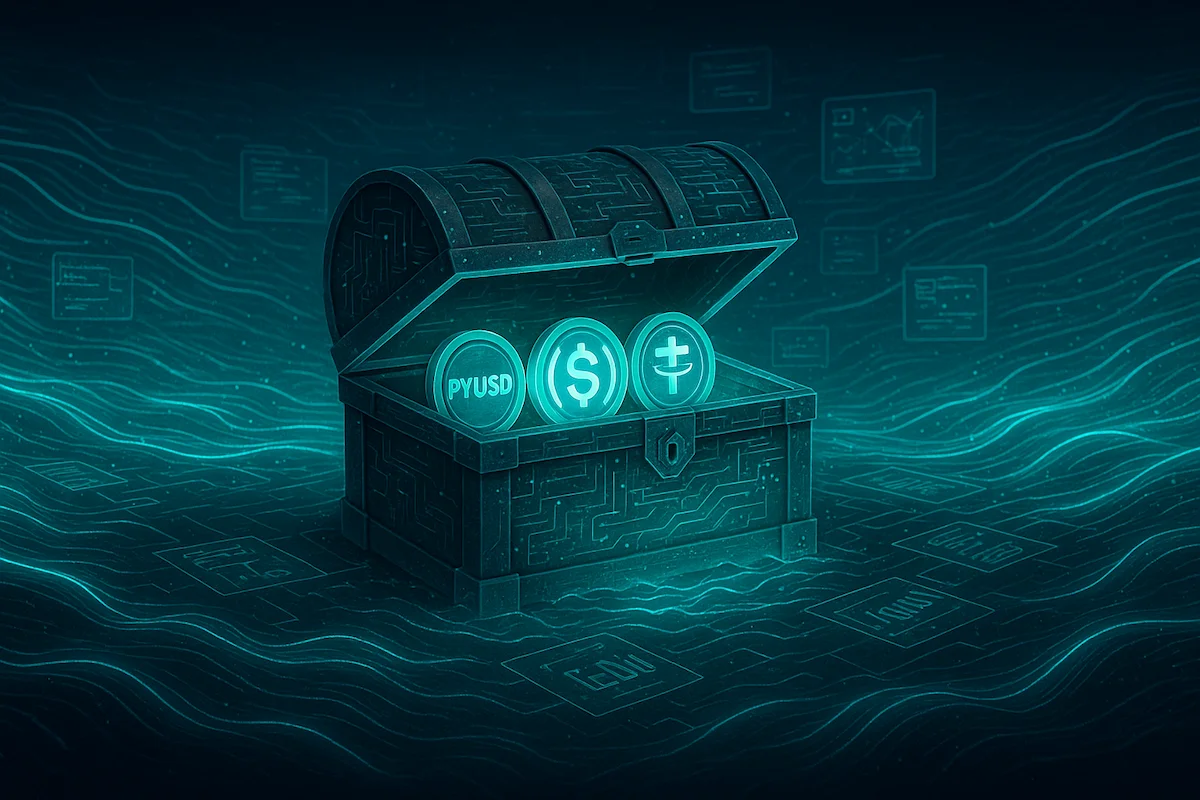
In recent years, more public companies have begun adding Digital Asset Treasuries (DATs) to their balance sheets. A Digital Asset Treasury is when a company holds cryptocurrencies such as Bitcoin, Ethereum, or stablecoins as part of its official treasury management strategy — not just as a one-off investment, but as a structured part of its financial playbook.
This trend signals the mainstreaming of digital assets in corporate finance. From MicroStrategy’s multi-billion dollar Bitcoin position to GameStop’s $500 million allocation and smaller enterprises quietly diversifying with Ethereum or Solana, the move toward DATs is accelerating.
The case for Digital Asset Treasuries (DATs) extends well beyond technology—it’s about building financial resilience and driving shareholder value. With the right governance, custody, and accounting platform, such as Bitwave, CFOs can reduce volatility risks while capturing the upside of this emerging asset class. For finance leaders, DATs open new opportunities but also introduce responsibilities: unlike traditional assets, digital assets require careful integration into daily operations, reconciliation with ERP systems, and transparent financial reporting. Bitwave equips controllers, accountants, and treasury teams with the tools they need to manage these complexities confidently.
What Are Digital Asset Treasuries (DATs)?
A Digital Asset Treasury refers to the corporate practice of acquiring, holding, and managing cryptocurrencies within a company’s treasury. Companies that do this deliberately and strategically are often called Digital Asset Treasury Companies (DATCOs).
Rather than parking all liquidity in cash or short-term securities, a DAT strategy might include:
- Bitcoin as a hedge against inflation and fiat debasement.
- Ethereum for exposure to decentralized finance (DeFi) and smart contracts.
- Stablecoins for liquidity management and global settlement.
In essence, DATs represent the blending of traditional treasury management with blockchain-based assets.
Why Are Enterprises Adding DAT Strategies?
Large enterprises are motivated by several factors:
- Hedge Against Inflation & Fiat Risk – Crypto assets like Bitcoin are often seen as “digital gold.”
- Diversification of Reserves – A new, non-correlated asset class for corporate balance sheets.
- Market Signaling & Investor Perception – Public DATs often enjoy higher visibility and sometimes premium valuations.
- Innovation Alignment – Tech-forward companies see DATs as a way to stay competitive in a blockchain-driven future.
- Operational Efficiency – Stablecoins and blockchain rails can enable faster cross-border settlement and B2B payments.
Considerations for Controllers, Accountants, and Treasury Managers
For finance professionals, DATs create both opportunities and responsibilities. Unlike holding traditional assets, digital assets introduce new layers of complexity that must be accounted for in daily operations and financial reporting. This must be addressed with Bitwave, and today, the Bitwave platform is used by publicly traded companies and large enterprises with their digital asset accounting, bookkeeping, reporting, and tax tracking
Key Areas to Consider:
- Invoicing & Purchase Orders (POs)
Ensure blockchain payments can still be tied back to invoices and PO numbers for full traceability. - ERP & Accounting Integration
Blockchain transactions need to reconcile cleanly into existing ERP systems (Oracle, SAP, NetSuite, etc.). Without this, the month-end close can become chaotic. - Accounting Treatment & Reporting
Until recently, GAAP and IFRS rules required impairment testing for digital assets, which could introduce volatility in earnings reports. However, with FASB ASC 350-60 now effective, that’s actually shifting to fair value re-measurement each period. - Tax Implications
DAT holdings may create capital gains/losses events upon sale or use. Finance teams must have tools to track basis and taxable events. - Internal Controls & Audit Readiness
Segregation of duties, custody policies, and clear audit trails are critical to satisfying external auditors and regulators. - Security & Custody
Proper key management, insured custody, and governance frameworks must be in place to prevent loss or theft.
Risks and Challenges of Digital Asset Treasuries
- Volatility – Crypto price swings can materially impact reported earnings.
- Regulatory Uncertainty – Laws around classification, taxation, and disclosures are still evolving.
- Liquidity Risk – Non-BTC/ETH assets may face thin markets.
- Reputation & Governance – Boards and shareholders may have differing views on crypto exposure.
The Rise of DATs
The rise of Digital Asset Treasuries (DATs) shows that crypto is no longer just a speculative play for retail investors — it’s becoming a strategic lever for public companies and large enterprises. For controllers, accountants, and treasury managers, the challenge is ensuring these assets are managed with the same rigor, controls, and reporting standards as traditional finance.
With the right tools and governance, DATs can help companies diversify balance sheets, hedge risks, and future-proof their treasury strategies in an increasingly digital economy.
Why Digital Asset Treasuries Matter for CFOs
For CFOs and executive teams, the case for Digital Asset Treasuries (DATs) goes beyond technology—it’s about financial resilience and shareholder value. With the right governance, custody, and accounting tools, like Bitwave, CFOs can mitigate volatility concerns while capturing upside potential from this emerging asset class.
Adding a measured digital asset allocation to the corporate treasury can:
- Diversify the Balance Sheet: Digital assets such as Bitcoin, Ethereum, or stablecoins provide an alternative to cash-heavy positions and help reduce exposure to inflation or currency risk.
- Enhance Investor Confidence: Transparent, well-governed DAT strategies signal forward-thinking financial management and can positively influence how markets value the enterprise.
- Improve Liquidity & Capital Flexibility: With programmable, blockchain-native assets, treasury teams can access new liquidity options, faster settlement, and global payment efficiency.
- Strengthen Strategic Positioning: Aligning with the digital economy demonstrates innovation leadership, appealing to both investors and customers in an increasingly blockchain-driven world
Bottom Line: How Bitwave Helps
Managing a Digital Asset Treasury (DAT) isn’t as simple as buying Bitcoin or Ethereum — it requires enterprise-grade infrastructure to handle accounting, reconciliation, tax, and compliance. This is where Bitwave makes the difference.
- ERP & Accounting Integration: Bitwave connects blockchain rails and digital assets directly into ERP systems (Oracle, SAP, NetSuite, QuickBooks, and more), ensuring that every on-chain payment, invoice, or treasury movement is properly recorded.
- Automated Reconciliation: Instead of manual workarounds, Bitwave automates reconciliation between crypto wallets, exchanges, and ERP ledgers — giving controllers clean books at month-end close.
- Audit & Compliance Readiness: With robust reporting, GAAP/IFRS alignment, and full audit trails, Bitwave gives accountants and auditors confidence that digital assets are managed with the same rigor as cash.
- Treasury Management Tools: Beyond just accounting, Bitwave provides dashboards for monitoring digital asset treasuries, enabling real-time visibility into positions, valuations, and risk exposure.
- Tax & Regulatory Support: Bitwave tracks cost basis, taxable events, and supports global reporting requirements, easing the burden for tax teams.
In short, Bitwave bridges the gap between blockchain innovation and traditional finance operations, empowering enterprises to adopt a crypto strategy without sacrificing control, compliance, or accuracy.


Disclaimer: The information provided in this blog post is for general informational purposes only and should not be construed as tax, accounting, or financial advice. The content is not intended to address the specific needs of any individual or organization, and readers are encouraged to consult with a qualified tax, accounting, or financial professional before making any decisions based on the information provided. The author and the publisher of this blog post disclaim any liability, loss, or risk incurred as a consequence, directly or indirectly, of the use or application of any of the contents herein.







